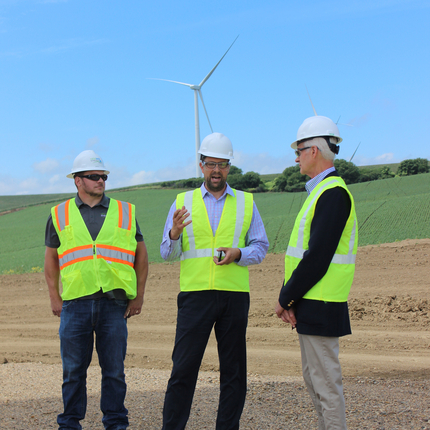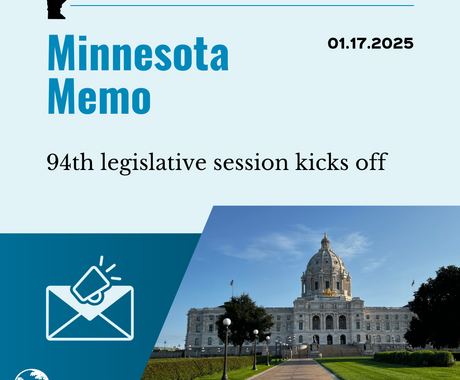As the industry continues to grow, many rural communities across the U.S. have reaped the benefits of clean energy development. Among the hotbeds is the Norfolk, Nebraska, area, which is in the midst of pursuing a community solar project. Mayor Josh Moenning said the region has already benefited greatly.
“Hundreds of wind energy-related construction workers are staying in the area and contributing to our economy, and our sales tax receipts have hit record highs,” Josh said. “Those workers during the construction phase stay in hotels, eat at restaurants, shop at stores.”
Josh found the development has spurred additional opportunities.
“New tax revenue created by projects can also provide a tremendous boost to local governments in need of funds for infrastructure and school improvements,” he said.
The mayor indicated additional revenue can have the effect of alleviating the tax burden on local property owners.
Additionally, Josh noted that Northeast Community College in Norfolk has become a pipeline for employment opportunities at these sites, providing a pathway for students to stay in the area.
“Previously, these students would have to go to other states like Iowa, but now they can stay closer to home,” he said.
As renewable energy development was on the rise in the Norfolk area, city officials started having conversations about directly investing in clean energy to meet the needs of residents.
“Knowing that there were citizens interested in using renewable energy was one consideration,” Josh said.
Another was the business and economic case.
Given the cost and competitiveness of clean energy, local renewables like a community solar project offer cities the opportunity to provide local and affordable energy, which may also assist in the recruitment of new businesses to an area.
The cost to install solar nationwide has fallen more than 70 percent in the last decade, with costs hitting an all-time low by the end of 2019. In Nebraska, the cost to install solar has fallen by 36 percent in the last five years alone. According to the Solar Energy Industries Association, this trend of declining costs has been ongoing for the last decade.
Those factors led city officials to explore the possibility of a community solar project. Working with Nebraska Public Power District (NPPD), the City of Norfolk proceeded with identifying a site and determining the size of project that would fit best. Ultimately, the proposed project was set to be 8.5 megawatts (MW)—the limit for local generation allowed by the city’s contract with NPPD—with up to 1.5 MW of storage connected to the system. The system is set to be put into service by the end of 2021.
“I’m excited that this project would be the first of its kind in terms of scale, and the fact that it would be tied to battery storage,” Josh said.
He noted the main takeaway from the experience is that it’s something any community in
Nebraska could do.
“Utilizing renewables can benefit anyone, anywhere,” he said. “Cities and counties shouldn’t
be afraid to look at the varying options they have to provide affordable, clean energy to citizens. We’re in a new period when Nebraska has an opportunity to be a leading energy producer in the country, and that opportunity is vastly underestimated. Cities that realize that opportunity will be ahead of the game.”
Feature photo: Renewable energy is on the rise in northeast Nebraska with wind energy boosting the economy. Norfolk Mayor Josh Moenning (center) is now leading an effort to install an 8.5 megawatt community solar project to go online by the end of 2021. | Photo submitted





